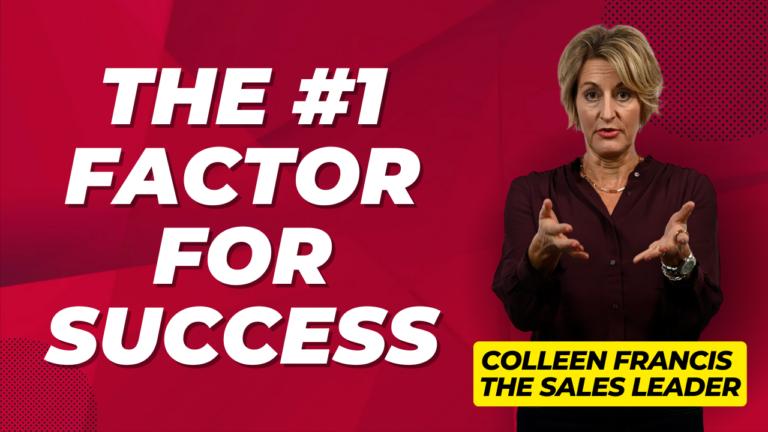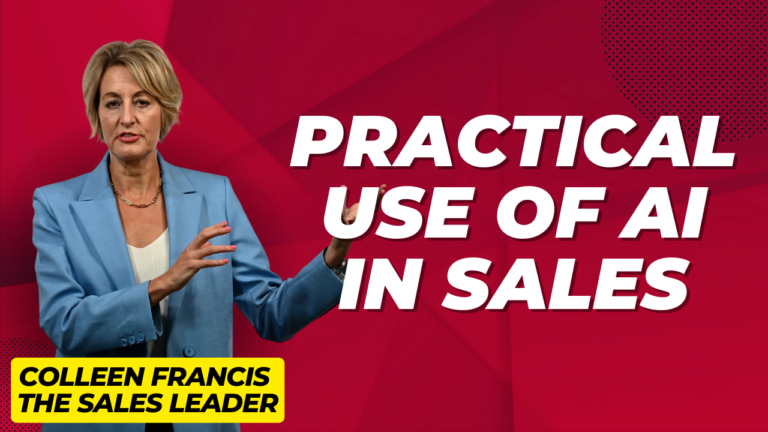“My worst fear in business is about losing my best, most profitable, most loyal customer…”
That’s a common fear: especially in today’s marketplace where competition is unprecedentedly fierce. But it’s a terrible mistake to think that way. First, because it shackles you to a victim mindset in which you’re powerless to prevent bad things from happening. Even more important, however, it’s rooted in a false assumption—a lethal one, really—that your customers only stick around as long as you keep delivering a great product or service.
Reality check time! No matter how great of a performer you, your team and your product are, you’re never owed loyalty by anyone. You must earn it and re-earn it.
The only way to do that is by treating customer retention in your business as a repeatable process that you implement methodically as part of every transaction in your sales cycle. It’s not just something you do when things look shaky during contract renewal time, or when you’re having a bad sales quarter.
You and your success team must engage in retention work every day with every customer. Especially when the outlook is great. Here’s how you make that happen.
STAY AHEAD OF THE CYCLE
Far too often when I’m coaching a sales team, they’ve found themselves in a lousy predicament where they’d waited for bad news to arrive before they even started to think about retention strategies. That’s what happens when the myth of entitled loyalty dissolves, and you’re forced to treat retention as an emergency response rather than as a preventative measure. The hard truth is that customers will only tell you they’re leaving for your competitor after they’ve made the decision to switch. Don’t wait. Act now. The best retention specialist I work with have a 12-month calendar of value based touch points with the customer focused on the results they are getting from the products, tips on how to do better, increasing relationships between both companies to create a bigger best practice community focused on results. As a contract, the worst, send an invoice when the renewal is approaching.
CONVERSATIONS MUST HAPPEN EARLY AND OFTEN
If you’re waiting until 60 days before the expiry of a customer contract to talk about a renewal or expansion opportunity, you’re already way too late. A process-focused retention strategy involves multiple conversations that happen four to six months in advance. And the planning behind those conversations goes back even further. It must start by gathering all the important parties together—that means all stakeholders on the client side, plus you and your leaders on the supplier side—to conduct a performance review no later than 6 months into your customer’s journey with you. My best performing clients do these quarterly.
PERFORMANCE IS ABOUT THEM, NOT ABOUT YOU
Your conversations about performance must focus on how well you’ve delivered ROI to them…as opposed to how well you’re meeting your internal metrics and sales goals. When it comes to reviewing your product or service, you must obtain answers to these vital questions: “What did the customer need to accomplish, what value did they place on that and what were the results from working with us?” Come prepared to tackle the data and the answers you’re given. Ensure you and your success team can demonstrate convincingly that you’re delivering and exceeding those performance expectations. Be ready to show them new or upcoming products and processes. All of this must happen before they start talking to the competition—and you’d better bet they’re going to be doing that!
A PROCESS IS NEVER SINGULAR
I’ve worked with and coached the best sales leaders around the world for over two decades. Not one of them has succeeded in attaining Olympic gold-level client retentions on their own. This is a process that’s a team effort by design. You need a team to make a convincing case for retention…and clients like to see that happen that way, too. Top performers and those who lead teams of sellers habitually meet and conduct those performance reviews and hold joint accountability sessions. One client of mine codified this into their business operations. They created a rule that says a certain number of reviews must occur annually. Furthermore, it’s only a legitimate review if the Sales Manager or Sales VP are in the room plus someone from Operations / Implementation and customer support alongside their counterparts at the client for that conversation. This team approach drives retention up dramatically.
PRIORITIZE YOUR RETENTION DATA
When it comes to retention strategies, far too many client-success teams get caught up in collecting and measuring the wrong data. For example: I had a group that I was coaching explain to me how their retention plan focused only on looking at revenue relative to a specific block of customers that had renewed 13 months previously. This rolling 13-month approach eliminated data from customer that cancelled at or before their 1 year anniversary. (Some companies call this a “Net Retention rate”). That’s only helpful if the task at hand is limited to studying revenue growth for those specific customers. But what about all the customers lost in that 12-month period? What is there affect on your revenue? Measuring revenue growth in isolation only gives you part of the story, and in this case the story was not showing them margin erosion, customer churn, cancelation rate or making allowances for pricing increases. A customer retention process can only be successful if you have a clear picture of the entire client’s story.
ALWAYS BE ABOUT VALUE
Unless your customer retention metrics are squarely focused on how well you’re delivering on customer value, you’re wasting time and resources. Customers care, and reward their loyalty to those who show a clear ROI that meets or exceeds expectations. Chapter 5 of my most recent book, Right on the Money, talks about how you must challenge your own assumptions about the value you believe you deliver. To understand customer value from their perspective, regularly conduct a black-ops exercise on yourself. Get your team together and look at how each of your customers uses your product or service. Why do they choose you? What’s missing in how you perform? How would you poach that customer if you were the competition? Use this information in your customer review to help them identify new and better ways they can be building ROI from your solutions.
YOUR SURVIVAL IS ALWAYS AT STAKE
When you change your mindset and look at retention as a process, all the unhelpful, self-defeating, time-wasting exercises fall away. You stop obsessing over things outside of your control and take full ownership over what’s entirely within your sense of agency. It’s an open secret that the most expensive activity in any business involves onboarding new customers. Your profits and long-term revenue streams come from the customers you retain. Stop behaving as though you don’t understand this! Otherwise you’ll eventually burn through your client list faster than you can find new ones.
Get serious about making retentions a process-driven activity in your organization, because nothing short of the survival of your business is at stake.




